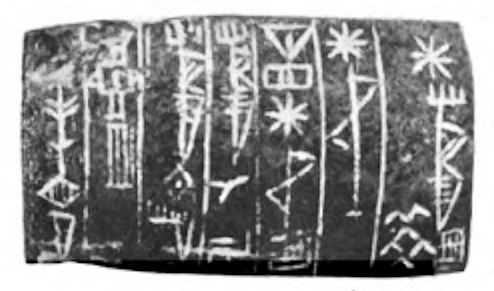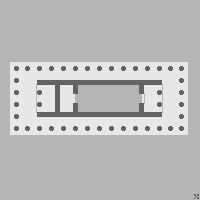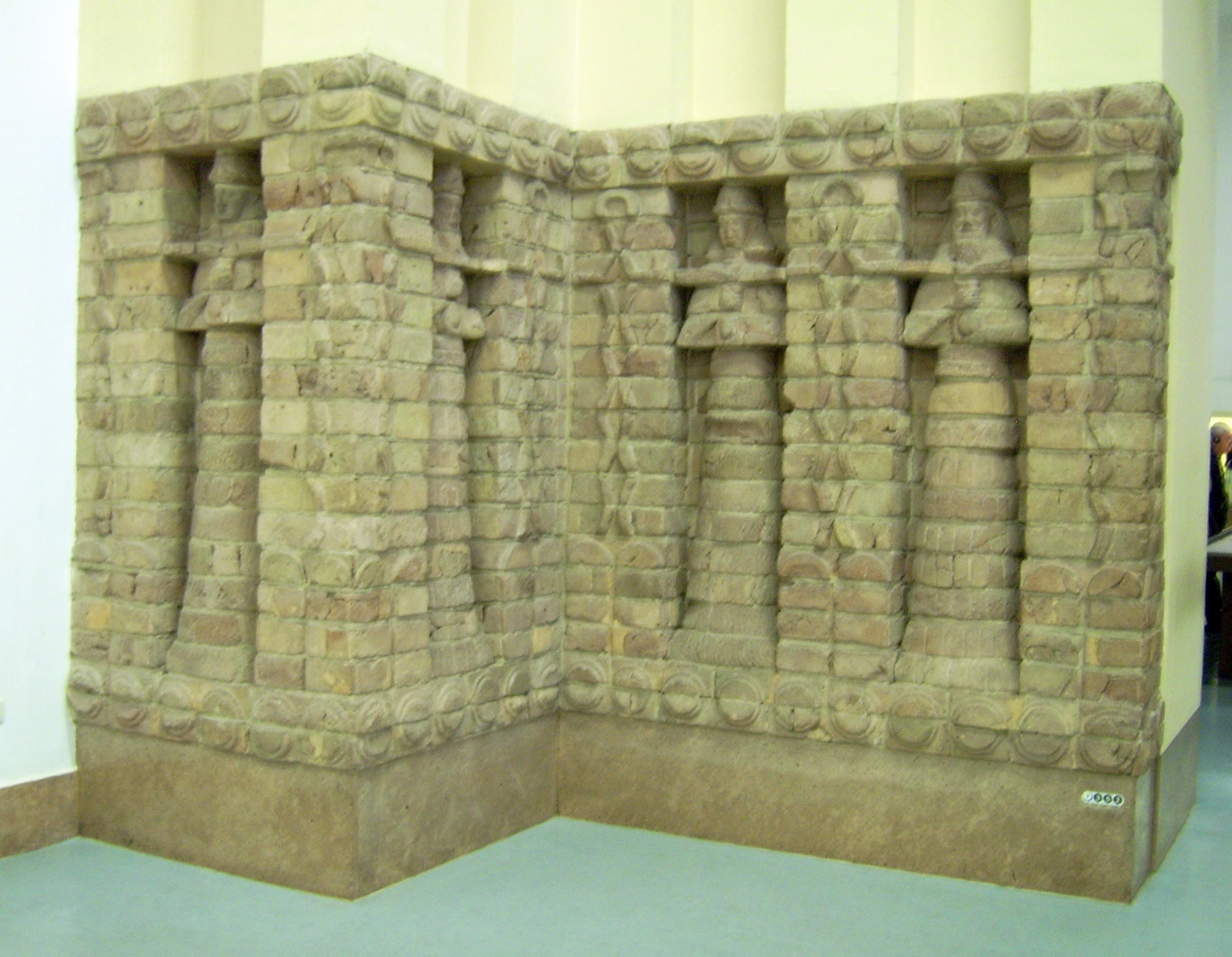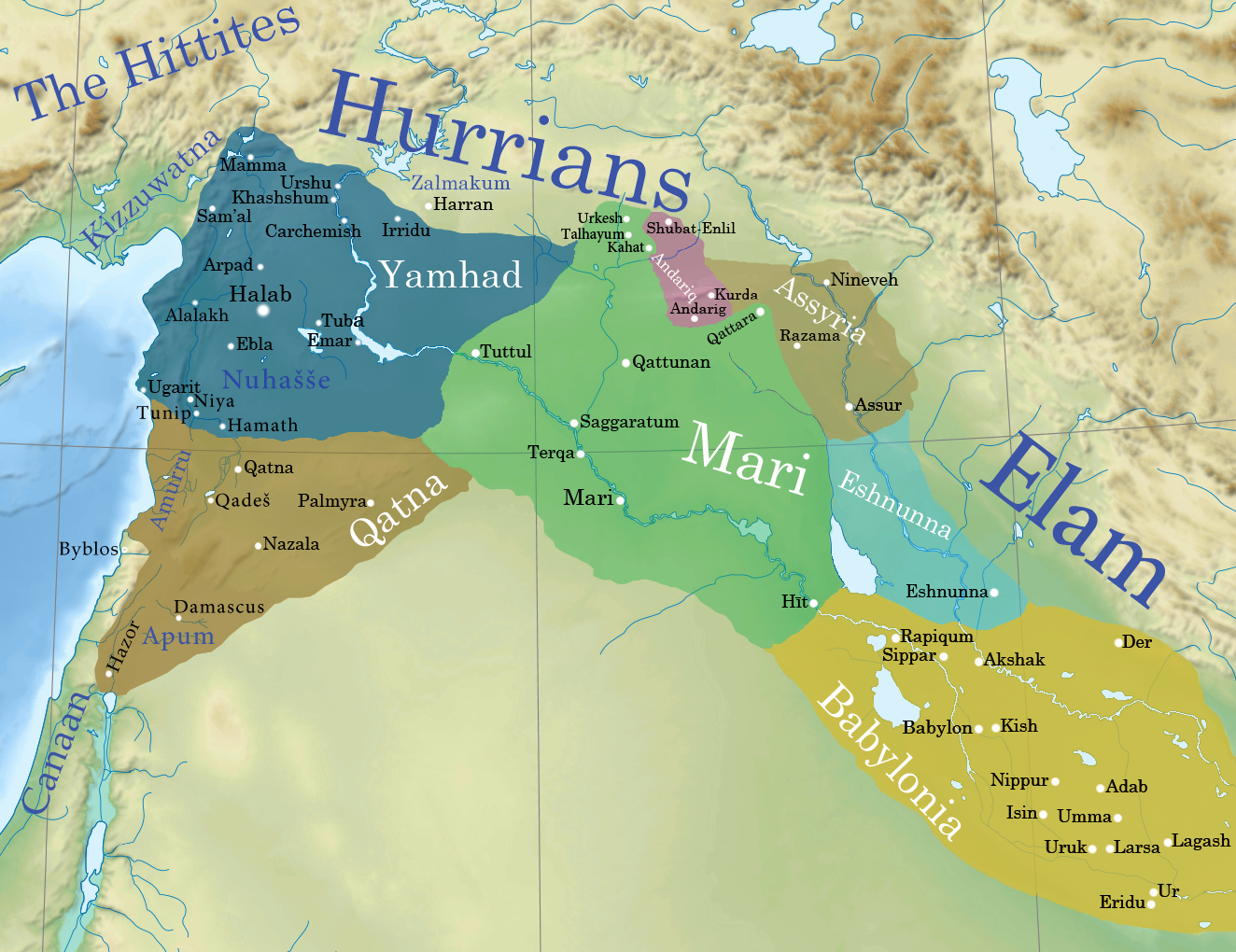|
Ninmeurur
Ninmeurur (, '' dnin-me-ur4-ur4'') was a Mesopotamian goddess regarded as a servant of Ishtar. In the '' balaĝ'' composition ''Uru-Ama'irabi'' she is specifically described as one of her advisers. Her name might be derived from the designation of a sanctuary of Nanaya located in Uruk, known from inscriptions of Sîn-gāmil and Anam. She was already worshiped in the Old Babylonian period. She also appears in ritual texts from Seleucid Uruk as one of the deities associated with Ishtar invoked during the '' akītu'' festival. Name and character Ninmeurur's name was written in cuneiform as '' d nin-me-ur4-ur4''. An ''emesal'' variant, ''ga-ša-an-me-ur4-ur4'', is also attested. It can be translated from Sumerian as "lady who collects all the '' me''". Joan Goodnick Westenholz suggested interpreting it as "lady of the Meurur temple". Multiple houses of worship bearing this name dedicated to either Ishtar or Nanaya are known, with one located in Larsa (as attested in a year formula of ... [...More Info...] [...Related Items...] OR: [Wikipedia] [Google] [Baidu] |
Ninigizibara
Ningizibara, also known as Igizibara and Ningizippara, was a Mesopotamian goddess associated with the ''balaĝ'' instrument, usually assumed to be a type of lyre. She could be regarded both as a physical instrument and as a minor deity. In both cases, she was associated with the goddess Inanna. A connection between her and the medicine goddess Gula is also attested, and it is possible she could serve as a minor healing deity herself. Character Ninigizibara's name most likely means "well regarded lady" in Sumerian. Another possibility is to translate it as "lady with a noble gaze". In Umma, the name was written without the NIN sign, and the goddess was called Igizibara, "well regarded". In texts from Mari the usual spelling is Ningizippara. Ninigizibara was both the name of a goddess and of individual instruments placed in a number of temples of Inanna. The instrument represented by her was the ''balaĝ''. The precise meaning of this Sumerian term is a matter of scholarly debat ... [...More Info...] [...Related Items...] OR: [Wikipedia] [Google] [Baidu] |
Ishtar
Inanna is the List of Mesopotamian deities, ancient Mesopotamian goddess of war, love, and fertility. She is also associated with political power, divine law, sensuality, and procreation. Originally worshipped in Sumer, she was known by the Akkadian Empire, Akkadians, Babylonian religion, Babylonians, and Assyrians as Ishtar. Her primary title is Queen of Heaven (antiquity), "the Queen of Heaven". She was the patron goddess of the Eanna temple at the city of Uruk, her early main religious center. In archaic Uruk, she was worshipped in three forms: morning Inanna (Inana-UD/hud), evening Inanna (Inanna sig), and princely Inanna (Inanna NUN), the former two reflecting the phases of her associated planet Venus. Her most prominent symbols include the Lion of Babylon, lion and the Star of Ishtar, eight-pointed star. Her husband is the god Dumuzid (later known as Tammuz), and her (attendant) is the goddess Ninshubur, later conflated with the male deities Ilabrat and Papsukkal. Inanna ... [...More Info...] [...Related Items...] OR: [Wikipedia] [Google] [Baidu] |
Joan Goodnick Westenholz
Joan Goodnick Westenholz (1 July 1943 – February 2013) was an Assyriologist and the chief curator at the Bible Lands Museum in Jerusalem. She held positions related to academic research at the Oriental Institute (University of Chicago), Harvard University, Ruhr University Bochum (Germany), New York University, Princeton University, and the W. F. Albright Institute of Archaeological Research at Jerusalem. She was one of the first people to research gender studies in relation to the Ancient Near East and she co-founded and edited the inter-disciplinary NIN – Journal of Gender Studies in Antiquity. Early life and education Westenholz was born in 1943 in Philadelphia and attended the University of Pennsylvania, where she graduated at the age of 21 with a degree in anthropology. She completed her PhD in Near Eastern Languages and Literatures from the University of Chicago The University of Chicago (UChicago, Chicago, or UChi) is a Private university, private research uni ... [...More Info...] [...Related Items...] OR: [Wikipedia] [Google] [Baidu] |
Old Babylonian Empire
The Old Babylonian Empire, or First Babylonian Empire, is dated to , and comes after the end of Sumerian power with the destruction of the Third Dynasty of Ur, and the subsequent Isin-Larsa period. The chronology of the first dynasty of Babylonia is debated; there is a Babylonian King List A and also a Babylonian King List B, with generally longer regnal lengths. In this chronology, the regnal years of List A are used due to their wide usage. Hardship of searching for origins of the First Dynasty The origins of the First Babylonian dynasty are hard to pinpoint because Babylon itself yields few archaeological materials intact due to a high water table. The evidence that survived throughout the years includes written records such as royal and votive inscriptions, literary texts, and lists of year-names. The minimal amount of evidence in economic and legal documents makes it difficult to illustrate the economic and social history of the First Babylonian Dynasty, but with historica ... [...More Info...] [...Related Items...] OR: [Wikipedia] [Google] [Baidu] |
Ninḫinuna
Ninḫinuna or Ninḫenunna was a Mesopotamian goddess. She could be regarded as a servant deity or a deified instrument, specifically a harp or a lyre. She was associated with Inanna and Ninisina, as indicated by god lists and literary texts. She was worshiped in Old Babylonian Isin, as well as in Seleucid Uruk. However, in the latter city her introduction into the local pantheon might have been a late phenomenon reflecting the study of god lists, and she is absent from sources from the Neo-Babylonian period from the same location. Name and character The standard writing of Ninḫinuna's name in cuneiform was '' d nin-ḫi-nun-na''. This form is attested for example in the Isin god list. A variant, ''dnin-ḫé-nun-na'', occurs in a ritual text from Uruk. Julia Krul romanizes this form as Ninḫenunna. The name can be translated from Sumerian as "lady abundance" or "lady of abundance". According to Manuel Ceccarelli, the similarity to the term ''ḫenun'', "perfume", is accid ... [...More Info...] [...Related Items...] OR: [Wikipedia] [Google] [Baidu] |
Isin
Isin (, modern Arabic language, Arabic: Ishan al-Bahriyat) is an archaeological site in Al-Qādisiyyah Governorate, Iraq which was the location of the Ancient Near East city of Isin, occupied from the late 4th millennium Uruk period up until at least the late 1st millennium BC Neo-Babylonian period. It lies about southeast of the modern city of Al Diwaniyah. The tutelary deity of Isin, dating back to at least the Early Dynastic Period (Mesopotamia), Early Dynastic period, was the healing goddess Gula (goddess), Gula with a major temple (, E-gal-ma) sited there as well as smaller installations for the related gods of Ninisina and Ninlil, Sud. Archaeology Isin is located approximately south of the ancient city of Nippur. The site covers an area of about 150 hectares with a maximum height of about 10 meters. By 1922 the site had been suggested as that of Isin. Ishan al-Bahriyat was visited by Stephen Herbert Langdon for a day to conduct a sounding, while he was excavating at K ... [...More Info...] [...Related Items...] OR: [Wikipedia] [Google] [Baidu] |
Cella
In Classical architecture, a or naos () is the inner chamber of an ancient Greek or Roman temple. Its enclosure within walls has given rise to extended meanings: of a hermit's or monk's cell, and (since the 17th century) of a biological cell in plants or animals. Greek and Roman temples In ancient Greek and Roman temples, the ''cella'' was a room at the center of the building, usually containing a cult image or statue representing the particular deity venerated in the temple. In addition, the ''cella'' might contain a table to receive supplementary votive offerings, such as votive statues of associated deities, precious and semi-precious stones, helmets, spear and arrow heads, swords, and war trophies. No gatherings or sacrifices took place in the ''cella'', as the altar for sacrifices was always located outside the building along the axis and temporary altars for other deities were built next to it. The accumulated offerings made Greek and Roman temples virtual treasuri ... [...More Info...] [...Related Items...] OR: [Wikipedia] [Google] [Baidu] |
Paul-Alain Beaulieu
Paul-Alain Beaulieu is a Canadian Assyriologist, a Professor of Near and Middle Eastern Civilizations at the University of Toronto. Beaulieu earned a master's degree from the Université de Montréal in 1980 under the supervision of Marcel Leibovici, and a Ph.D. from Yale University in 1985. He was an assistant and subsequently associate professor at Harvard University before joining the faculty at Toronto. Books Beaulieu is the author of: *''L'introduction du cheval et du char de guerre au Proche-Orient au IIe millénaire av. J.C.'' (Masters thesis, Université de Montréal, 1980).List of completed masters' theses in history Univ. de Montréal, retrieved 2011-05-03 (in French). *''The Reign of Nabonidus, King of Babylon, 556–539 B.C.'' (Ph.D. thesis, Yale University, 1989, and Yale ... [...More Info...] [...Related Items...] OR: [Wikipedia] [Google] [Baidu] |
Eanna
E-anna ( , ''house of heavens''), also referred to as the Temple of Inanna, was an ancient Sumerian temple in Uruk. Considered the "residence" of Inanna, it is mentioned throughout the ''Epic of Gilgamesh The ''Epic of Gilgamesh'' () is an epic poetry, epic from ancient Mesopotamia. The literary history of Gilgamesh begins with five Sumerian language, Sumerian poems about Gilgamesh (formerly read as Sumerian "Bilgames"), king of Uruk, some of ...'' and various other texts. The evolution of the gods to whom the temple was dedicated is the subject of scholarly study. Texts The Epic of Gilgamesh From Tablet One: He carved on a stone stela all of his toils, and built the wall of Uruk-Haven, the wall of the sacred Eanna Temple, the holy sanctuary. See also * Uruk - Eanna district References External links Ancient Near East temples Mesopotamian religion Uruk Inanna {{Religion-struct-stub ... [...More Info...] [...Related Items...] OR: [Wikipedia] [Google] [Baidu] |
Andrew R
Andrew is the English form of the given name, common in many countries. The word is derived from the , ''Andreas'', itself related to ''aner/andros'', "man" (as opposed to "woman"), thus meaning "manly" and, as consequence, "brave", "strong", "courageous", and "warrior". In the King James Bible, the Greek "Ἀνδρέας" is translated as Andrew. Popularity In the 1990s, it was among the top ten most popular names given to boys in List of countries where English is an official language, English-speaking countries. Australia In 2000, the name Andrew was the second most popular name in Australia after James. In 1999, it was the 19th most common name, while in 1940, it was the 31st most common name. Andrew was the first most popular name given to boys in the Northern Territory in 2003 to 2015 and continuing. In Victoria, Andrew was the first most popular name for a boy in the 1970s. Canada Andrew was the 20th most popular name chosen for male infants in 2005. Andrew was the ... [...More Info...] [...Related Items...] OR: [Wikipedia] [Google] [Baidu] |
Babylon
Babylon ( ) was an ancient city located on the lower Euphrates river in southern Mesopotamia, within modern-day Hillah, Iraq, about south of modern-day Baghdad. Babylon functioned as the main cultural and political centre of the Akkadian-speaking region of Babylonia. Its rulers established two important empires in antiquity, the 19th–16th century BC Old Babylonian Empire, and the 7th–6th century BC Neo-Babylonian Empire. Babylon was also used as a regional capital of other empires, such as the Achaemenid Empire. Babylon was one of the most important urban centres of the ancient Near East, until its decline during the Hellenistic period. Nearby ancient sites are Kish, Borsippa, Dilbat, and Kutha. The earliest known mention of Babylon as a small town appears on a clay tablet from the reign of Shar-Kali-Sharri (2217–2193 BC), of the Akkadian Empire. Babylon was merely a religious and cultural centre at this point and neither an independent state nor a large city, s ... [...More Info...] [...Related Items...] OR: [Wikipedia] [Google] [Baidu] |
Shamshi-Adad I
Shamshi-Adad (; Amorite: ''Shamshi-Addu''), ruled 1813–1776 BC, was an Amorite warlord and conqueror who had conquered lands across much of Syria, Anatolia, and Upper Mesopotamia.Some of the Mari letters addressed to Shamsi-Adad by his son can be found in the Mari Letters section of His capital was originally at Ekallatum and later moved to Šubat-Enlil. Rise Shamshi-Adad I inherited the throne in Ekallatum from Ila-kabkabu (fl. c. 1836 BC – c. 1833 BC). Ila-kabkabu is mentioned as the father of Shamshi-Adad I in the "Assyrian King List" (AKL); a similar name (not necessarily the same figure) is listed in the preceding section of the AKL among the “kings whose fathers are known”. However, Shamshi-Adad I did not inherit the Assyrian throne from his father but was instead a conqueror. Ila-kabkabu had been an Amorite king not of Assur (Aššur) (in Assyria) but of Ekallatum. According to the '' Mari Eponyms Chronicle'', Ila-kabkabu seized Shuprum (c. 1790 BC), then ... [...More Info...] [...Related Items...] OR: [Wikipedia] [Google] [Baidu] |






